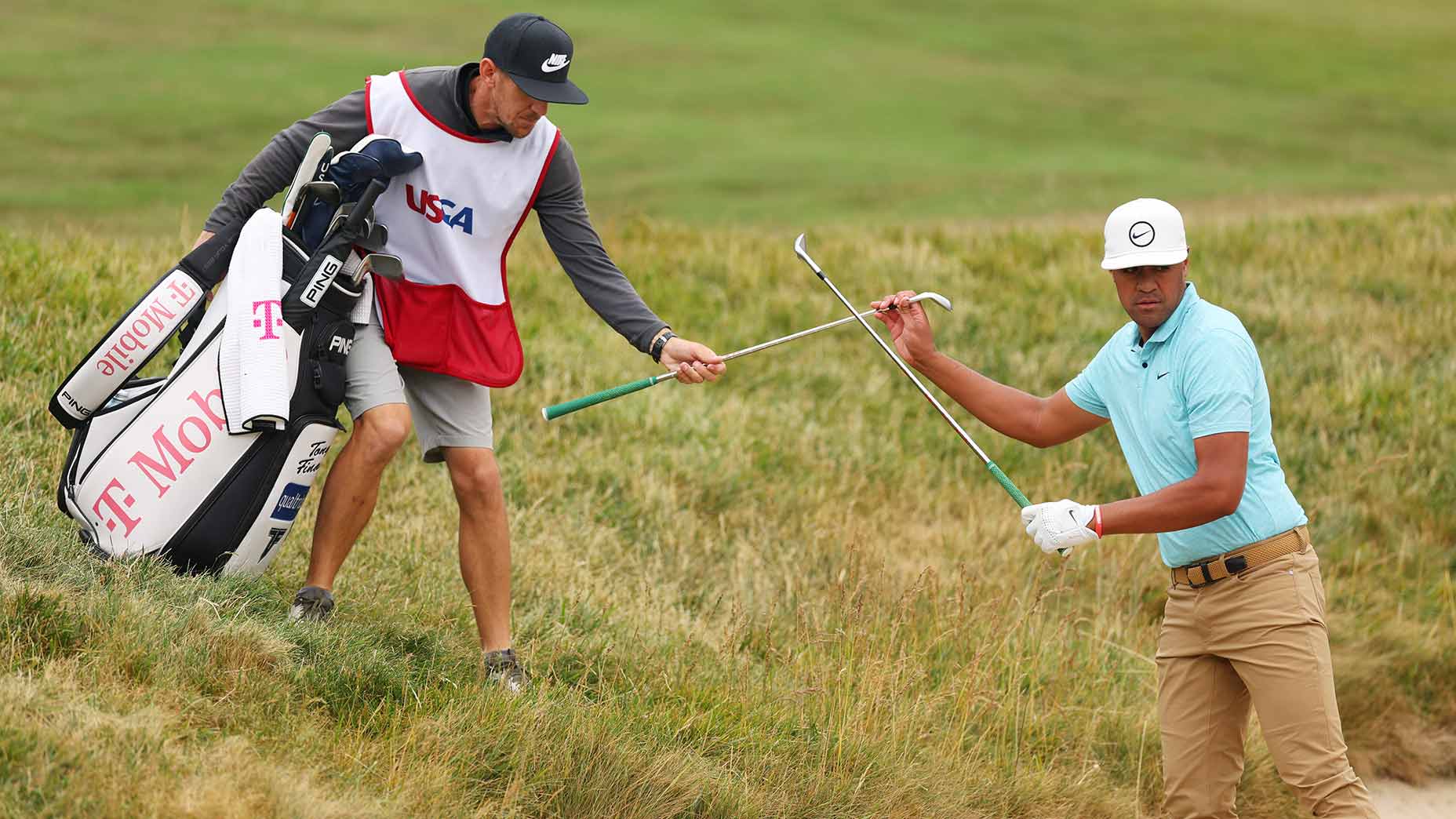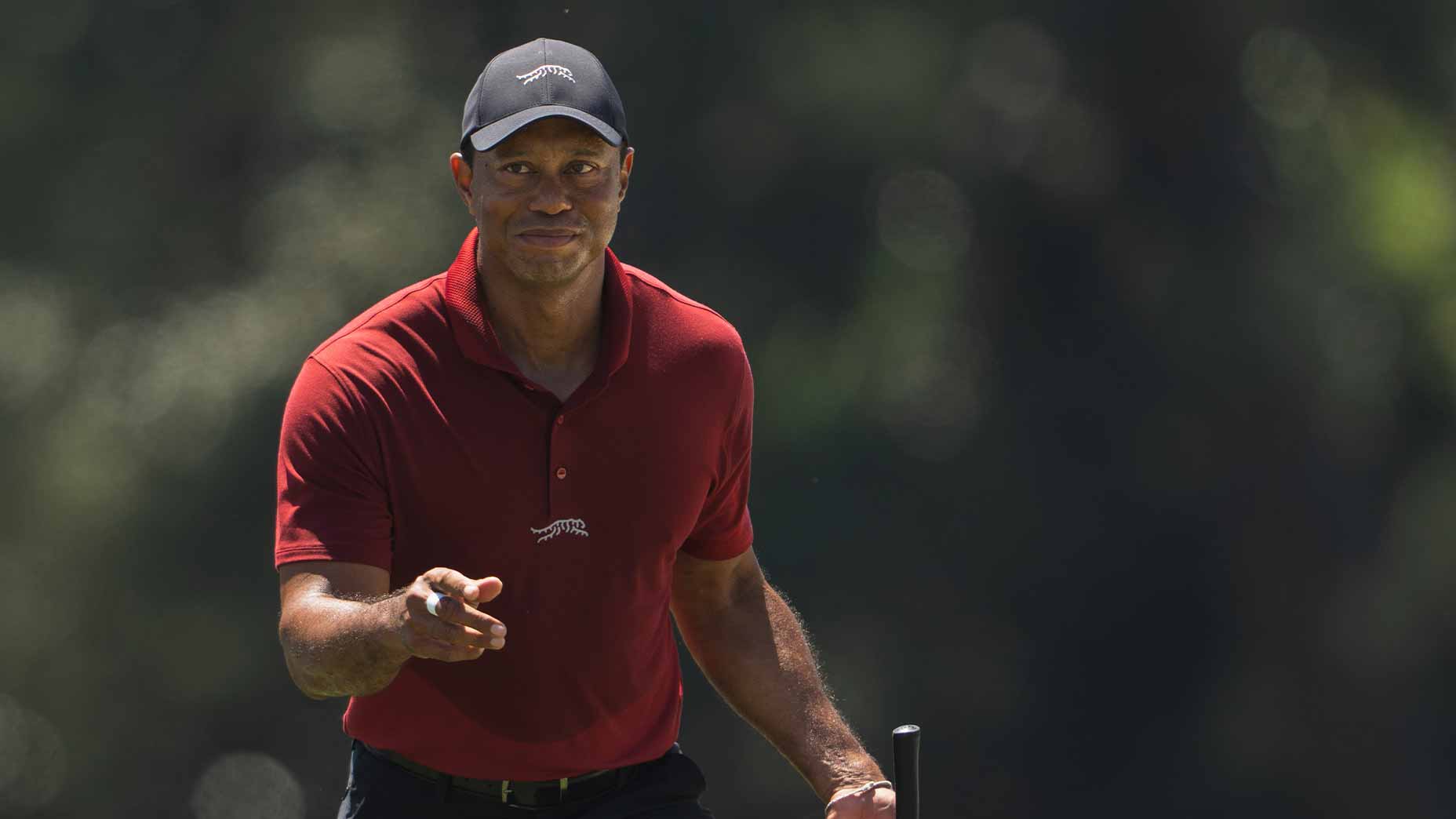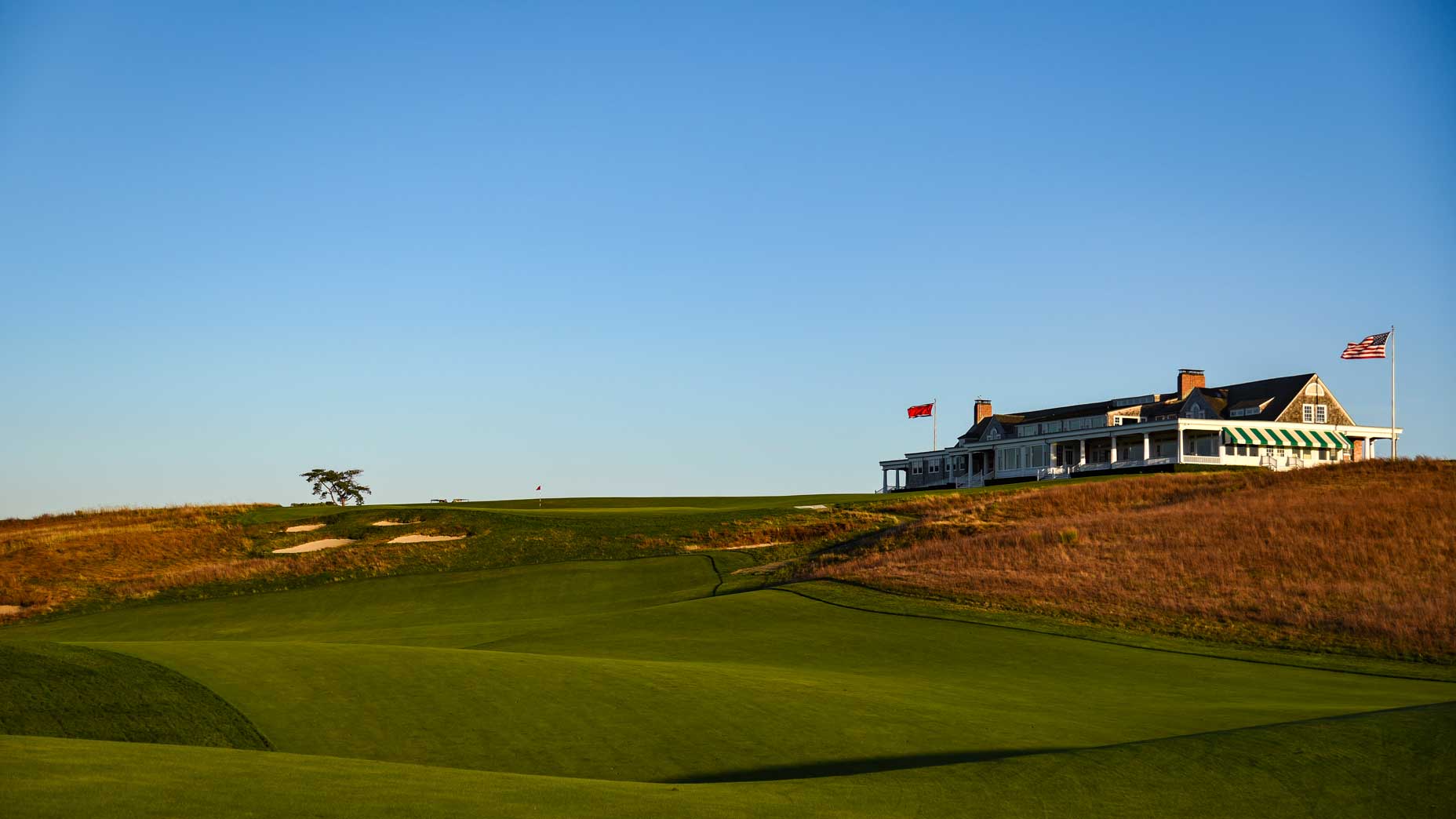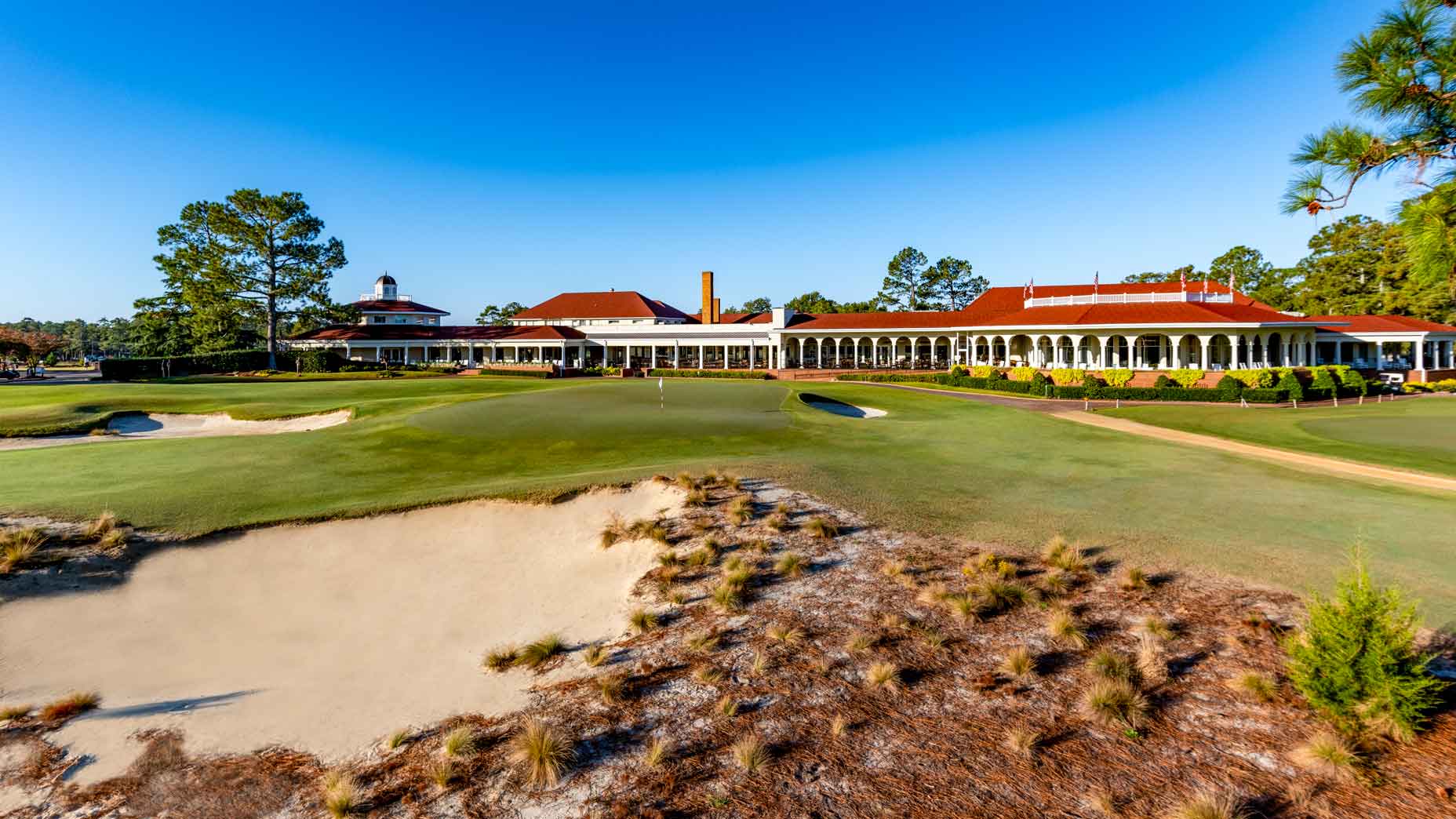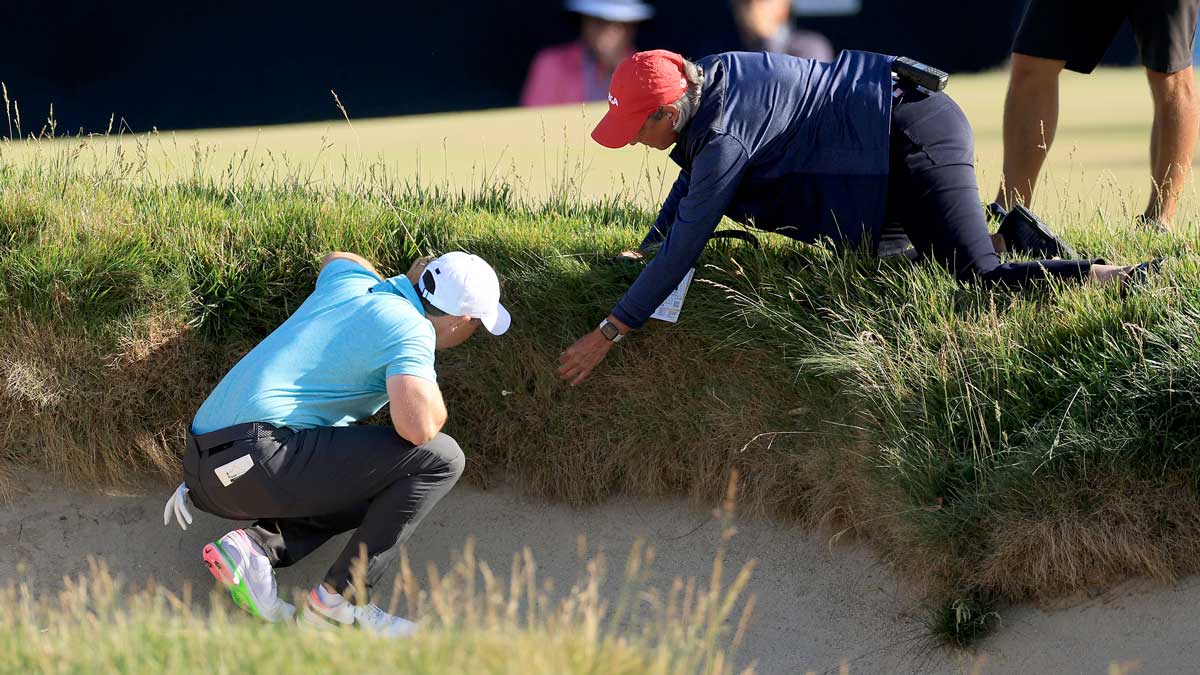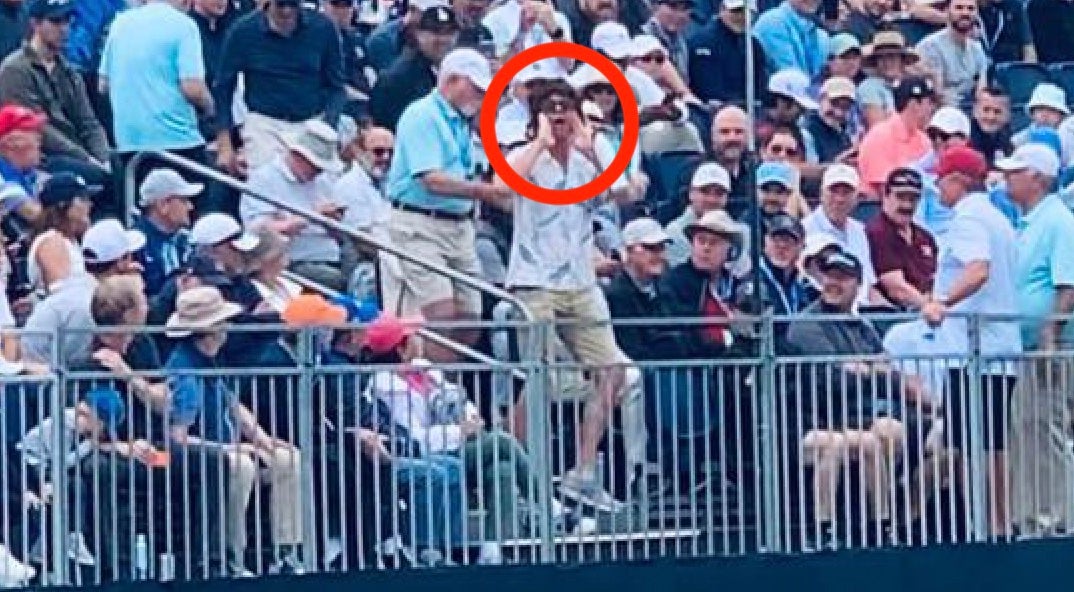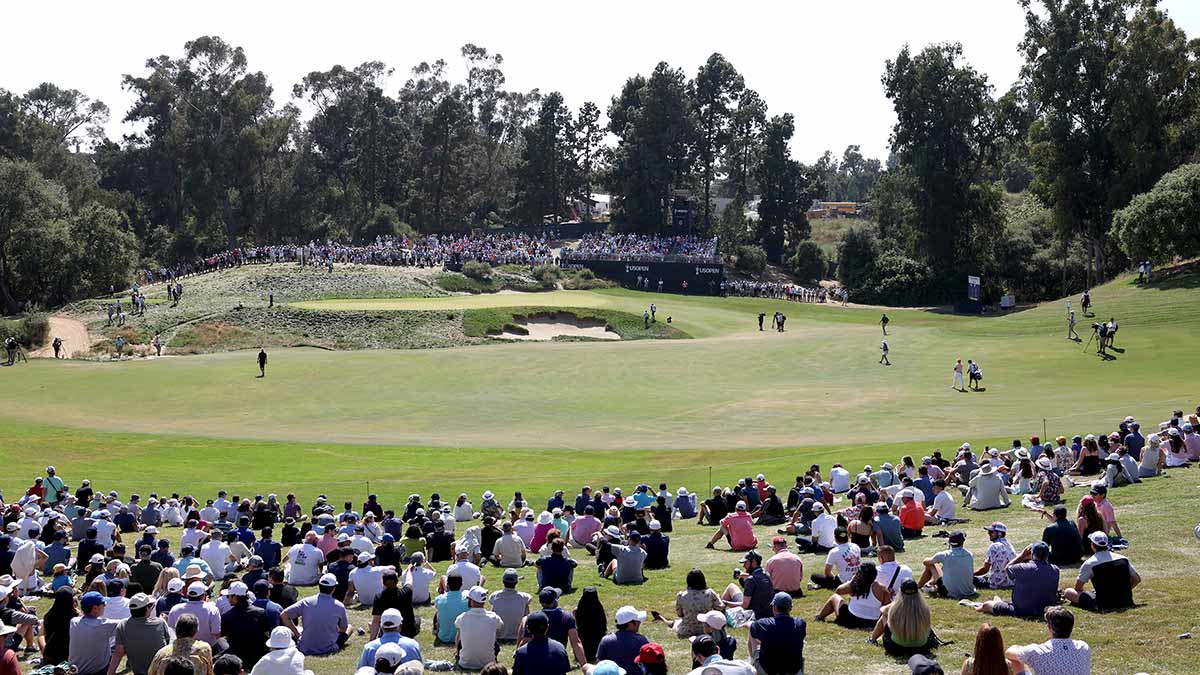What a two-time U.S Open champ thinks of the U.S. Open setup at LACC

The par-3 14th hole on the North Course at LACC.
getty images
Ample fairways. Aces. Record-setting scoring.
If early action from Los Angeles Country Club has made you think the U.S. Open is playing too easy, you’re not alone.
You also needn’t worry, according to a two-time winner of the event.
“I don’t like seeing a pair of 62s, either,” Ernie Els said. “But trust me. Things are going to really tighten up.”
It was Friday morning, midway through the second round, and Els was speaking from his home in Florida, where he has been enjoying a rare week off. At 53, roughly half his life removed from the second of his two U.S. Open titles, Els keeps plenty busy with family, the Champions Tour and various side ventures, including a winery and a course-design business.
But when the national championship rolls around, he makes a point of tuning in.
So far, he conceded, this one hasn’t looked like a U.S. Open.
“It’s a beautiful course—the way it flows so naturally over the land almost reminds me of the Australian Sandbelt,” Els said. “But it was a little soft that first day, and you’ve got a bunch of holes where guys are coming in with wedges.”
A recipe for blood-red numbers.
What’s more, Els noted, “Those fairways are so wide, wider than anything I’ve seen in a U.S. Open. It almost makes me wish I could be out there playing.”
Maybe not this weekend, though, when he said conditions are destined to get grueling.
The friendly first-round setup, with several tees pushed up and a handful of pins in vulnerable locations, reflected what Els described as a cautionary—but necessary—approach by the USGA.
“When you go to a golf course where you don’t have a lot of experience holding big events, you want to make sure you have a fair contest,” he said. “And if you go overboard early, things can get out of hand.”
Having competed in 27 U.S. Opens, Els said that he’d seen cases where the USGA had “panicked over scoring,” and taken extreme measures to defend the venue.
He cited 2018 U.S. Open at Shinnecock Hills (the event where Phil Mickelson putted a moving ball in petulant protest) as an example where the governing body had protected against par but compromised the character of the design.
“That’s the important thing,” Els said. “No matter what you do, the character of the course must come through.”
In that regard, Els said he likes what he seen from LACC. Wide fairways? That’s the how the course was intended to be played.
“And the greens look absolutely perfect,” Els said. “I’d rate them a 12 out of 10.”
Some things, of course, cannot be controlled. In 1997, at Congressional, Els won his second U.S. Open on a rain-softened course. Three years prior, at Oakmont, he’d captured his first on a course that had been baked dry by a heat wave.
“They were just doing what they could to keep it alive,” Els said. “And on that last day, things were so fast and firm, there were only a few guys who broke par.”
Els suspects that a similarly tough challenge awaits this weekend.
“The greens are going to be fast, the rough is going to be tough, there’s going to be pressure,” he said.
As he spoke, Wyndham Clark held the lead at nine under.
Els said he didn’t think that number would last.
“Six to eight under,” he said. “Somewhere around there for the winning score.”

